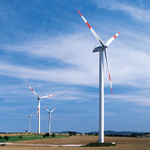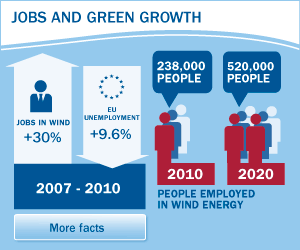Australia battles wind energy myths
 by Ketan Joshi, the Operator at the Operations & Control Centre, Infigen Energy
by Ketan Joshi, the Operator at the Operations & Control Centre, Infigen Energy
Around the world 72 trillion watts of power stored in the wind is churning above our heads. To the layperson, this doesn’t mean a lot – until you explain that this is enough power to meet the current energy needs of the human race four times over, with some to spare. Many regions of Australia are demonstrably rich in wind resources. Australia’s southern coastline lies neatly in the path of westerly wind flows known as the ‘Roaring 40s’, and the eastern coastline possesses a particularly high-quality resource. Given the scientific and ethical impetus to adjust our electricity generation equipment to low (or zero) carbon emission technologies, it is important to honestly qualify how wind has affected Australia’s national energy market, and to ensure facts about wind energy are communicated honestly and passionately.
There is a tendency to focus on capacity factor when examining the performance of wind energy in a country. Worryingly, these statistics are regularly misunderstood in the media and by the community – a capacity factor of 35% is perceived as an ‘efficiency’ of 35%. This is likely the progenitor of the myth that wind energy is inefficient. An alternative method of representing power output is to look at the contribution of wind energy to the nation’s energy supply, and to measure output in quantity rather than capacity factor. In 2011, wind energy in South Australia produced a total of 3.4 TWh – a quarter of total demand in the state for the year (13 TWh). A significant number of the electrons that were pushed into homes in 2011 came from the kinetic energy stored in the wind. As this number grows, so should awareness of the many advantages of choosing renewable energy.
Perhaps large quantities of variable generation can cause network instability? On the 17th of August 2011 at 2:50 am, 87.9% of generation in South Australia was sourced from wind energy. When this occurred, the wholesale electricity price remained stable ($18.86 /MWh or €15/MWh) and the National Electricity Market sailed tidily through the night. Fascinatingly, there were 14,668 different instances in 2011 where wind generation contributed to greater than 50% of total generation in South Australia. Network stability remains unhindered by high levels of wind penetration in South Australia.
Despite the power of statistical evidence, myths and misinformation continue to spread in Australia’s media landscape, propagated through opinion pieces (and increasingly, news articles) in media outlets. Opportunities to spread scientifically defensible and critically unassailable truths about wind energy are invaluable, and gaining a direct audience with members of the public plays a vital role. Infigen Energy organised a tour at Capital Wind Farm for Global Wind Day 2011, and this year we are organising the same again at Woodlawn Wind Farm. Giving the public an opportunity to wander at the base of these elegant, quiet and efficient machines is a key factor in spreading much-needed knowledge about wind turbines.
For Global Wind Day 2011, I had the privilege of participating in a live video conference with hundreds of school students across the state. Their enthusiasm for the processes, machinery and science underlying renewable energy was inspiring and contagious. Unhesitatingly capturing that zest and instilling it where we can is an essential ambition for the wind industry in Australia.






